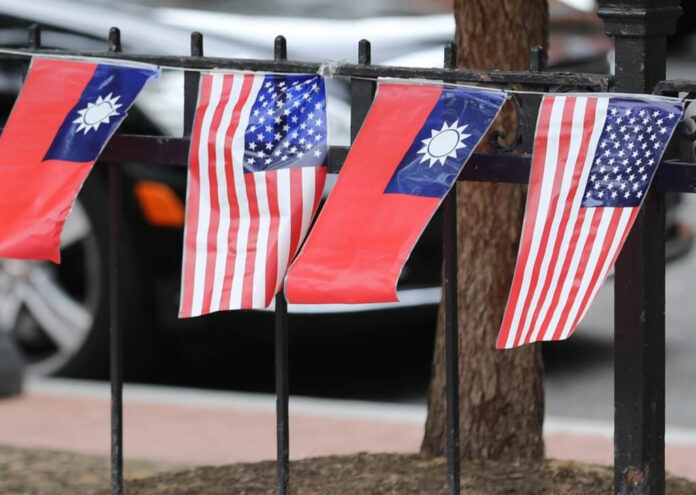U.S. Defense Bill Proposes US$300 Million in Military Assistance to Taiwan
In a strategic move to strengthen Taiwan’s defense capabilities, U.S. lawmakers have proposed up to US$300 million worth of military support for Taiwan in the Fiscal Year 2025 National Defense Authorization Act (NDAA). The bill, which has yet to be ratified, emphasizes bolstering defense initiatives in the Indo-Pacific region, with a special focus on Taiwan.
Key Provisions of the NDAA’s Taiwan Military Support
House Speaker Mike Johnson announced the inclusion of this military assistance in the 2025 NDAA at a news conference on Tuesday. He stated that the bill would enhance U.S. defense initiatives in the Indo-Pacific, an area of growing concern due to China’s increasing military assertiveness.
The proposed bill seeks to authorize the U.S. Department of Defense to provide “appropriate assistance” under the Taiwan Security Cooperation Initiative, a program designed to enhance Taiwan’s defense capabilities. A congressional aide explained that this initiative was partly modeled on a similar scheme used to support Ukraine in its conflict with Russia, where the U.S. purchased defense articles from private enterprises.
Taiwan Security Cooperation Initiative: What’s Included?
Under the Taiwan Security Cooperation Initiative, the U.S. would support Taiwan’s relevant government agencies with various military equipment and training. The proposed support includes:
- Anti-armor equipment
- Radars
- Drones
- Long-range precision fire systems
- Anti-ship missiles
- Integrated air and missile defense systems
- Intelligence and surveillance assistance
- Training for critical operations
The aim is to enhance Taiwan’s deterrence capabilities against potential threats, particularly from China, which has ramped up military tensions in the region.
New Joint Program on Military Trauma Care
Another key feature of the proposed NDAA is the establishment of a joint military trauma care program between the U.S. and Taiwan. This program would focus on improving trauma care for Taiwanese military personnel, including:
- General trauma care
- Amputee care
- Post-traumatic stress disorder (PTSD) treatment
- Traumatic brain injury care
- Mental health support
This initiative reflects the growing cooperation between Taiwan and the U.S. in addressing military health challenges, ensuring that Taiwanese troops are well-equipped to handle the physical and psychological challenges of modern warfare.
Rim of the Pacific Exercise and the BOLSTER Act
In addition to military aid, the 2025 NDAA includes a nonbinding clause that suggests inviting Taiwan’s naval forces to participate in the Rim of the Pacific (RIMPAC) exercise in 2025. RIMPAC, led by the U.S. military, is the largest international maritime warfare exercise in the world, involving multiple nations and allies. Taiwan’s inclusion would symbolize a deeper level of military cooperation between the U.S. and Taiwan.
Moreover, the NDAA introduces the “BOLSTER Act,” a bill designed to counter any aggressive actions by China toward Taiwan. The BOLSTER Act outlines plans for coordinated responses if China attempts to overthrow Taiwan’s government, occupies Taiwanese territory, or launches cyberattacks against Taiwan’s infrastructure.
Approval Process and Timeline
The NDAA was finalized by the U.S. Senate and House of Representatives on December 7, 2024. However, the bill requires approval from both chambers of Congress and the U.S. president’s signature before it can become law. It is important to note that while the NDAA outlines the budget for the Department of Defense, the actual allocation of funds will depend on the passage of a separate appropriations bill.
Table 1: Overview of Military Assistance and Programs Proposed Under NDAA
| Assistance Category | Details |
|---|---|
| Anti-Armor Equipment | Tanks, missiles, and other armor-piercing weaponry. |
| Long-Range Precision Fires | Advanced fire systems to enhance Taiwan’s deterrence capabilities. |
| Radars and Surveillance Systems | Cutting-edge radar systems for early threat detection. |
| Drones | Unmanned aerial vehicles for reconnaissance and combat. |
| Missile Defense Systems | Anti-ship and air-defense missile systems. |
| Military Trauma Care | Trauma care, PTSD treatment, and rehabilitation programs for Taiwanese military. |
Frequently Asked Questions (FAQ)
- What is the Taiwan Security Cooperation Initiative?
The Taiwan Security Cooperation Initiative is a U.S. program that aims to provide Taiwan with military equipment and training to enhance its defense capabilities, particularly in light of growing threats from China. - How much military support is proposed for Taiwan under the 2025 NDAA?
The 2025 NDAA proposes US$300 million worth of military assistance for Taiwan, including advanced weaponry, surveillance equipment, and training programs. - What is the Rim of the Pacific (RIMPAC) exercise?
RIMPAC is the largest international maritime warfare exercise, organized by the U.S. Navy, involving countries from around the world. Taiwan’s naval participation would mark a significant step in its military cooperation with the U.S. - What does the BOLSTER Act propose?
The BOLSTER Act is designed to create coordinated plans between the U.S. and its European allies to respond to any Chinese aggression towards Taiwan, including military action or cyberattacks. - What is the next step for the NDAA?
The NDAA requires approval from both the U.S. Senate and House of Representatives, as well as the U.S. president’s signature. Afterward, a separate appropriations bill will determine the actual funding allocation.
